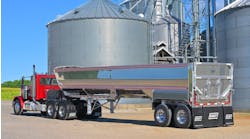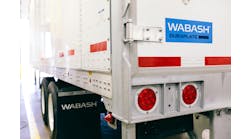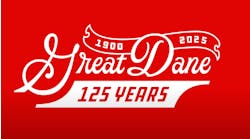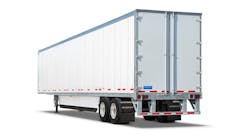Two presenters break down various systems to benefit equipment upfitters and fleet professionals
TRUCK technology has advanced drastically in recent years, and distributors can expect even more changes as hybrid trucks gain traction with commercial customers.
How do they work, and what do distributors need to know about them? The NTEA session titled “I Have a Hybrid Truck In The Shop: Now What?” was offered to provide answers. The session included presentations from two speakers, one speaking on hydraulic hybrids, the other a specialist in electric hybrid systems.
Leading off was Simon Baseley, director of engineering studies and applications at Bosch Rexroth, manufacturers of a system designed to use hydraulic pressure to capture and utilize the energy that otherwise is lost in stop-and-start driving.
“This system can deliver significant value when matched with the right drive cycle and emissions profile,” Basely said. “The refuse truck is one very good example. It improves fuel consumption, performance, and acceleration while providing two to four times the brake life.
Basely said that shops staffed with technicians who know hydraulics should catch on quickly to hydraulic hybrid systems.
Hydrostatic Regenerative Braking (HRB) systems for commercial vehicles and mobile equipment recapture braking energy. Instead of allowing braking energy to be lost, the HRB system converts it into hydraulic energy and stores it. The next time the vehicle is accelerated, this stored energy is fed back to the transmission. As a result, the truck's internal combustion engine does not have to work as hard.
Rexroth has developed parallel and series HRB systems for the various drive concepts in commercial vehicles and mobile equipment. The hydraulic hybrid drive works best when used on heavy vehicles and mobile equipment that brake frequently. The more intensive the start-stop cycle, the more HRB can reduce fuel consumption.
He said the parallel hybrid drive is designed for vehicles having a conventional mechanical drivetrain and powered primarily by an internal combustion engine. A gearbox links a hydraulic variable axial piston unit to the truck's drive shaft to convert kinetic into hydraulic energy when braking. As the truck brakes, the axial variable piston unit uses that energy to load a hydraulic bladder accumulator with hydraulic fluid. This process is controlled by an electronic controller that is teamed with a hydraulic valve manifold. During acceleration, the entire process is reversed: The pressurized fluid is discharged in a controlled manner from the accumulator and flows back through the variable axial piston unit. The latter is driven by the fluid flow and, acting like a motor, gives up its energy to the mechanical drive train. A pressure relief valve in the system ensures the highest level of safety for both processes.
A bonus for the vehicle operator: The HRB significantly reduces brake wear. The production of fine dust from brake wear and the CO2 emissions from the combustion engine are reduced accordingly.
Modular construction means the parallel HRB is be integrated into essentially any commonly available commercial vehicle frame. This also enables retrofitting of existing vehicle fleets.
System components of the parallel HRB: A4VSO variable axial piston pump with gearbox for pump/motor operation; high-pressure bladder accumulator; HIC valve manifold; electronic controller; and sensors.
Words of caution
One thing for technicians to consider when working on trucks equipped with hydraulic hybrid systems:
“There are critical areas where there are possible high temperatures, but rarely do temperatures become high enough to cause issues,” Baseley said. “We use standardized hydraulic fittings available from general distributors. Hose assemblies are pressure-tested. The accumulator is a very strong component. It's obviously designed to handle 5000 psi.
“When temperatures within the oil fall outside established bounds, the system will not allow engagement of the pump or will only engage with limited torque and limited mode until temperatures get back within range. Experience has shown that hardly ever happens. But if we do see significant system anomalies, the system will be shut down. Because it's a power-off system, vehicle operation is not compromised. You will not get fuel savings and brake-wear reduction, but you can drive and operate the vehicle.
“We normally supply the system in the truck with the accumulator charge, but you would need to recharge occasionally because there is some diffusion of air into the oil. The equipment you need is a nitrogen bottle in 2,300 psi, fully charged. You need an intensifier that is readily available from distributors and works off shop air and takes the lower pressure of nitrogen charge boosted up so you can inject it into the accumulator through the appropriate valve. If you need to repair the accumulator because of an internal problem, then you need trained hydraulic personnel or return the unit to a supplier or distributor for repair.”
Next Page: Kevin Campbell
Kevin Campbell
Technical service director of hybrid systems Eaton Corp
Campbell said Eaton's hybrid electric vehicle (HEV) has come a long way from its debut. The first medium-duty hybrid system prototype had batteries that weighed close to 2000 pounds, and now they are closer to 250 pounds.
He said on the utility side, a way was needed to maintain 12-volt truck batteries when the engine is off at the truck site.
“In certain applications, that engine might not run for hours while we're supplying power through the hybrid system,” he said. “So 340-volt DC power is converted down to 13.8 volts so that we can maintain 12-volt truck batteries and run low-voltage equipment. We use hybrid power to maintain truck batteries at the job site. We now have components you can add onto the utility system for plug-in power.”
The Utility ePTO is an added option to the base hybrid system. There is PTO operation with the engine off, and a standard PTO pump.
“Together, we're going to interface with everything on the truck — between the body controller on the truck, hybrid controller module on our system, and hydraulic and fiber-optic switches on the boom — to make the ePTO system work.
“The engine-off electric PTO system is an added option to the base hydraulic system. If we have a regular delivery truck, the hybrid drive unit, inverter, and battery stay the same. But if you're going to go into the boom or run the hydraulics unit, this would be an added option to that base system. The main focus is to keep the engine off as long as possible at the job site. We utilize shutting off equipment. If a guy is up on the boom 50 feet in the air working on a power pole and not asking for hydraulic pressure, we start shutting off equipment on the truck to help save power.”
He said the hybrid drive unit is similar to the current 6-speed FO-6406A. It has two SAE six-bolt PTO locations and can be run off either side, and has CD-50 synthetic lube.
“There are no external coolers, filters, or pumps in the transmission,” he said. “It relies on splash from the countershaft in the transmission to lubricate and keep the gears happy inside the transmission.
“This is a parallel hybrid system. If the hybrid does go offline, you can drive it home as a diesel-only truck. It is a full hybrid in that we do have an elected launch mode. The diesel engine stays at idle, and we keep the clutch open with the electronic clutch actuator and drive the vehicle at lower speeds through electric alone. There are a lot of things to take into consideration: the weight of the vehicle, what kind of terrain you're on, what kinds of grades you're climbing. A utility vehicle is not going to have an electronic-only mode like a lighter FedEx vehicle might have.”
It has a three-phase AC induction motor that produces a peak 44kw/26kw continuous, and a maximum output of 60hp/200 ft-lb.
“It's a mobile generating device at the job site,” he said. “This is where our Auxiliary Power Generator (APG) has worked pretty good in some applications. Instead of having to drag along another generator to the job site, you can use this to power tools and lighting at the job site.”
The PEC weighs approximately 220 pounds and can be relocated on the chassis to accommodate different configurations, as long as the DC cable is kept under 10 feet.
“This is an air-cooled unit. We have an air intake on the front and a filter underneath that has to be checked every four months. If it's not changed on a regular basis, that leads to lower hybrid assistance. We're going to degrade the system if the battery starts to heat up. That means reduced fuel economy and less power.”
The DC/DC converter is for utility truck applications only and converts hybrid DC high voltage to maintain the vehicle's 12-volt system in ePTO mode, and has 1.5kw output capacity.
“This is strictly used to take high voltage hybrid power and downgrade it to 13.8 volts, and those cables go directly to 12-volt batteries on the truck,” he said. “This is only in operation when parked at the job site and you have ePTO selected on the gear selector in the cab. Once he exits out of the ePTO and is driving to the next job site, this is just along for the ride.”
He said items are needed before starting work on an Eaton HEV: product training, service tools, installation and service literature, and a person to contact with questions.
Product training is available through the Roadranger Academy on roadranger.com. This is a two-hour session designed for bodybuilders who will install a piece of equipment and never see it again, and includes access, HEV component and system overview, high-voltage safety, body integration for ePTO operation, and troubleshooting.
Hands-on training is also available though Roadranger Academy, with two- or three-day classes available.
“This is dealer technician stuff: ‘How do I use this 400-page troubleshooting guide?’ ” he said. “We work with local technical colleges to use their facilities at a brand-neutral site.”
ServiceRanger 3.0 is the next generation diagnostic software needed to support the Eaton hybrid product. Support items include hybrid service shutdown, retrieving fault code information, hybrid system configuration changes, and the ePTO function test.
Service literature is available at Roadranger.com or by calling 800-826-4357.








